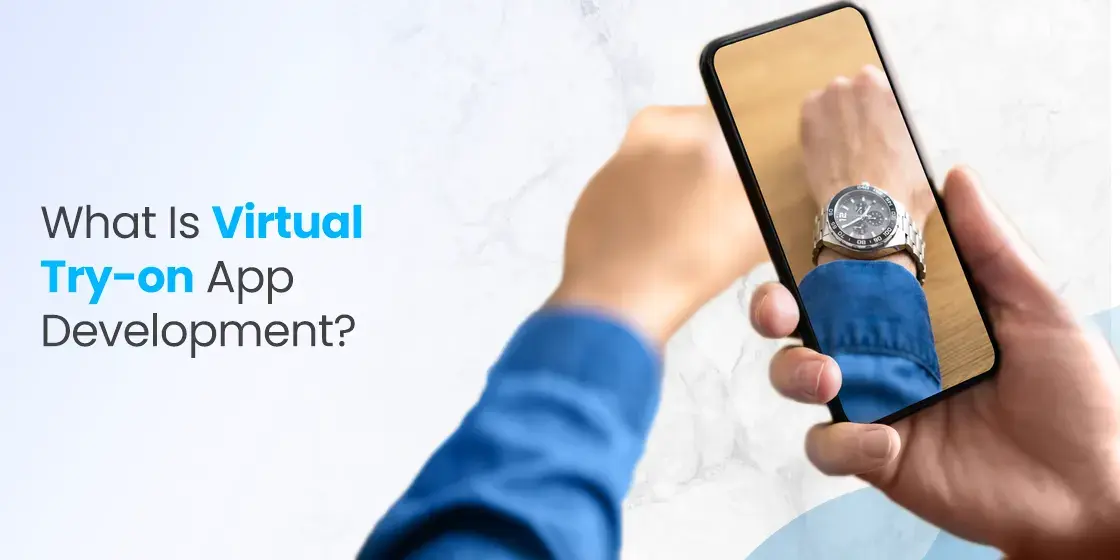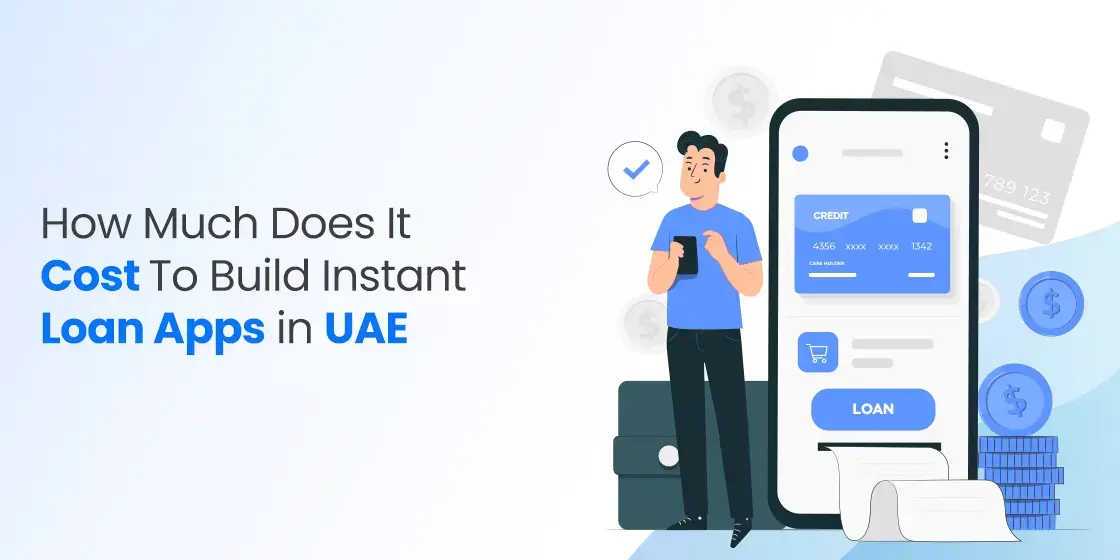Table of Content
Learn What is Virtual Try-on Technology and How Does it Work?
The rise of augmented reality has given inception to many unique ideas. One of them is the demonstration of live products through the lens of AR. It is a technology that allows you to experience things virtually through the app. It is becoming highly popular in the ecommerce sector, as businesses are looking to use augmented reality to market products creatively on the mobile apps. This is why the demand of virtual try-on app development is also increasing, encouraging companies to take advanced app development services from the reputed agencies.
Creating a virtual try-on app is quite different from the conventional development. It not only requires good understanding of the latest tools and frameworks, but also a detailed understanding of artificial intelligence and augmented reality. This is one of those areas where many people struggle, because working with AI and AR is certainly not easy. Both of these technologies are related to the advanced concepts that requires solid grip on technicals.
If your are also looking to develop a virtual try-on app by yourself, read this blog in detail. It will give you a brief idea how to develop these apps by following specific set of rules. Keeping all these points in check is important, because implementing AR is quite complex, hence you need to follow a strategy to develop these apps perfectly. Let’s first understand what is augmented reality, and why it is being used so rapidly in the virtual ecommerce apps.
What is Augmented Reality?
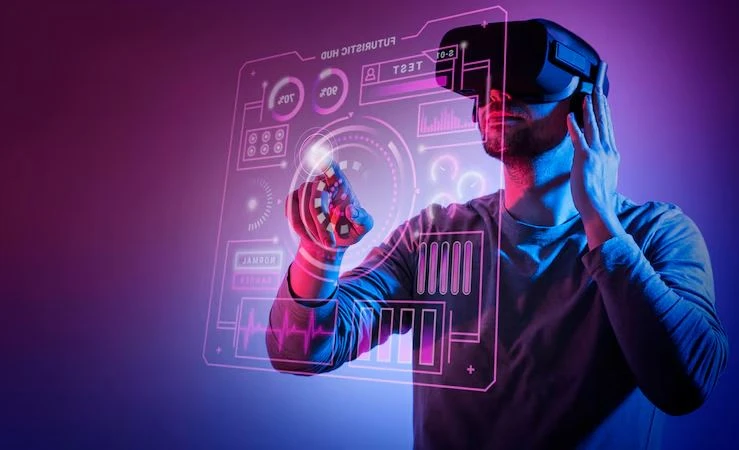
Augmented reality (AR) is a cutting-edge technology that overlays digital information onto the real world, blending the physical and virtual environments seamlessly. Unlike virtual reality (VR), which immerses users entirely in a computer-generated environment, AR enhances the real-world environment by adding layers of digital content such as images, videos, 3D models, or text. This integration enables users to interact with both the physical and digital worlds simultaneously, offering a unique and immersive experience.
At its core, AR relies on advanced computer vision, sensory inputs, and spatial mapping technologies to understand and interpret the user’s surroundings in real-time. By leveraging cameras, sensors, GPS, and other tracking devices, AR-enabled devices such as smartphones, tablets, or AR glasses can detect and recognize objects, surfaces, and locations in the physical environment. This understanding allows AR applications to superimpose digital content onto the real world with precision and accuracy, creating an illusion of virtual elements coexisting with tangible objects.
The applications of augmented reality are diverse and span across various industries including gaming, education, healthcare, retail, architecture, and entertainment. In gaming, AR enables players to interact with virtual characters and objects overlaid onto the real world, transforming parks, streets, and living rooms into immersive gaming environments. This precisely shows how powerful the AR technology is, given the fact that it can take you into a whole new world built on the basis on transformative reality.
What are Virtual Try-on Apps?
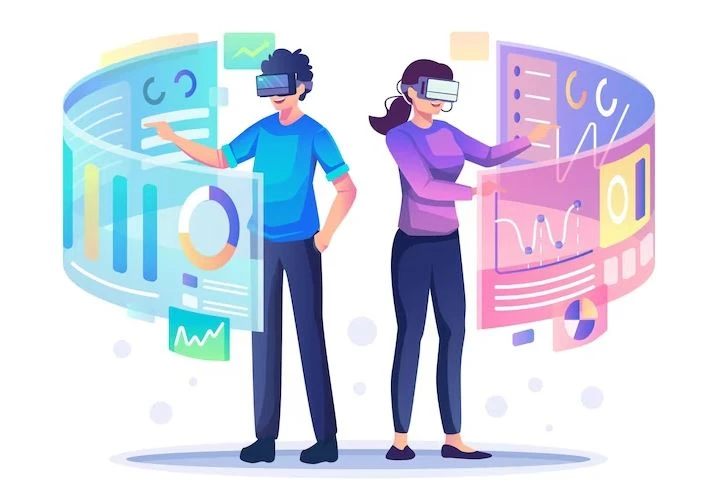
Virtual try-on apps are innovative tools that leverage augmented reality and computer vision technologies to enable users to virtually try on various products before making a purchase. These apps allow users to visualize how different items such as clothing, accessories, eyewear, makeup, or even furniture would look on them or in their surroundings without physically trying them on or visiting a store. By utilizing the camera on smartphones, virtual try-on apps superimpose digital representations of products onto the user’s live video feed or images.
One key aspect of virtual try-on apps is their ability to accurately simulate the appearance and fit of products on the user in real-time. Advanced computer vision algorithms analyze the user’s body or facial features, such as size, shape, skin tone, or facial structure, to generate realistic renderings of how the chosen products would look when worn or placed. These apps often incorporate customization features, allowing users to adjust parameters such as size, color, style, or placement to tailor the virtual try-on experience to their preferences.
Virtual try-on apps have become increasingly popular across various industries, particularly in fashion, beauty, and eyewear. In the fashion industry, these apps enable users to virtually try on clothing items, shoes, and accessories, helping them make more informed purchasing decisions and reducing the need for returns due to sizing or style issues. Similarly, in the beauty industry, virtual try-on apps allow users to experiment with different makeup looks, hairstyles, or skincare products, empowering them to discover new products and trends from the comfort of their own homes.
How to Start Virtual Try-on App Development?

Developing a virtual try-on app is not that easy, because it requires complete knowledge of utilizing AR technology. It should be done by following a proper strategy that includes sequential planning of every development task. If you do not know how to build an ecommerce app like Namshi containing creative AR features, take a look at the step-by-step explanation given below.
Research the AR Industry
Before developing a virtual try-on app, thorough research is essential to ensure its success in meeting user needs and market demands. Firstly, it’s crucial to understand the target audience and their preferences. Conducting surveys, interviews, or focus groups can provide valuable insights into user demographics, behaviors, and expectations regarding AR experiences. This research helps in defining user personas and identifying specific features or functionalities that will resonate with the target audience.
Secondly, researching the technological aspects of AR development is vital for building a successful virtual AR app. This includes understanding the capabilities and limitations of AR platforms, SDKs (Software Development Kits), and devices. Researching the latest advancements in AR technology, such as object recognition, spatial mapping, and gesture tracking, can help in determining the feasibility and potential enhancements for the app.
Define Clear Project Goals
Just like FemTech app development, setting up project goals for a virtual AR application involves a structured approach to define the purpose, scope, and desired outcomes of the project. Firstly, it’s essential to establish clear objectives that align with the overarching vision of the application. This involves defining the problem the AR app aims to solve or the value it seeks to provide to its users. Whether it’s enhancing customer engagement, or delivering immersive experiences, the project goals should be specific, measurable and aligned with the basic idea of the app.
Secondly, outlining the scope of the virtual AR application is crucial to ensure that the project remains focused and manageable within the allocated resources and timeline. This involves identifying the key features, functionalities, and content that will be included in the app to achieve the defined objectives. Prioritizing features based on their importance and feasibility helps in creating a roadmap for development and ensuring that the essential elements are addressed first.
Build a Prototype
Building a prototype for a virtual try-on ecommerce app involves several key steps to create a functional demonstration of the app’s core features and functionalities. At the start, it’s crucial to identify and prioritize the essential elements of the app, such as product catalog integration, AR rendering capabilities, and user interface design. Using wireframing and mockup tools, designers can create low-fidelity prototypes that outline the app’s structure, navigation flow, and visual aesthetics. This allows stakeholders to visualize the user experience and provide feedback on the overall concept.
Once the app’s basic framework is defined, developers can begin implementing the core functionalities required for virtual try-on experiences. This includes integrating AR technology for real-time object detection, facial tracking, and rendering virtual products onto the user’s image. Leveraging AR mobile app development frameworks and SDKs, such as ARKit for iOS or ARCore for Android, developers can build prototypes that demonstrate how users can interact with virtual products, customize their appearance, and make informed purchasing decisions.
Test and Debug the Application
Comprehensive testing and iterative refinement stand as crucial pillars in guaranteeing the quality and functionality of a virtual try-on application. Through meticulous examination and user feedback assimilation, businesses can effectively identify and rectify any bugs or performance hurdles, thereby refining features and augmenting overall quality to elevate user satisfaction levels. This iterative process, fueled by user input, enables businesses to remain agile and responsive to the dynamic shifts in the latest tech trends in the UAE, positioning them favorably for sustained success in the long term.
Engaging in a thorough testing regimen, encompassing various aspects from user interface responsiveness to product rendering accuracy, ensures that the virtual try-on app delivers a seamless and immersive experience to users. Additionally, soliciting user feedback through beta testing phases and usability studies provides invaluable insights into user preferences, pain points, and feature preferences, enabling businesses to tailor the app to better meet user needs.
Important Use Cases of Virtual Try-on Apps
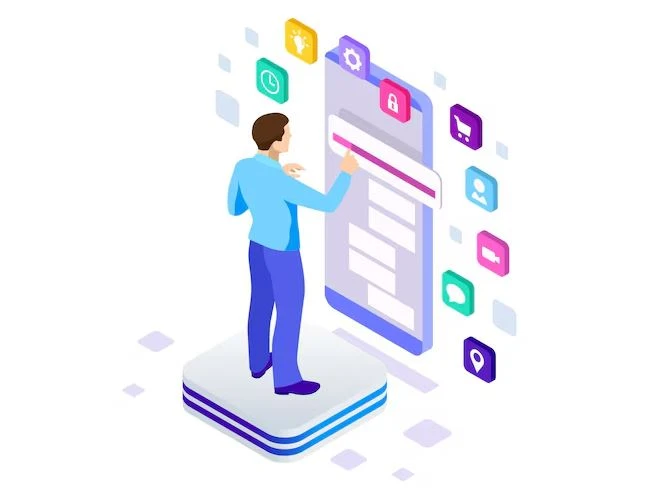
Virtual try-on apps can be used by different companies. Their utility does not limits under any single store category. Instead, these apps can be used by anyone who is looking to offer customers a new interactive way to shop products. Let’s take at the uses cases of virtual try-on apps below.
Home Décor
Among the myriad applications of virtual try-on technology, one particularly prominent use case emerges within the sector of home decor and furnishings. These applications revolutionize the home decor experience by empowering users to virtually position furniture and decor elements within their living spaces. By leveraging these apps, individuals gain the ability to envision how various pieces of furniture and decor items will integrate into their home environment, offering them a comprehensive preview of aesthetics and spatial dynamics before committing to a purchase.
In the context of home decor, virtual try-on apps serve as invaluable tools for users seeking to curate and design their living spaces with precision and confidence. These applications facilitate a seamless exploration of different design possibilities, enabling users to experiment with various furniture arrangements, color schemes, and decor accents effortlessly. Moreover, by providing a realistic visualization of how furnishings will look and fit within their homes, these apps mitigate the uncertainty associated with traditional online shopping.
Clothing and Apparel
Within the apparel industry, virtual try-on applications stand as prominent tools revolutionizing the way consumers interact with fashion. These innovative apps offer users the opportunity to visualize how various garments, whether casual wear, professional attire, or workout gear, will complement their bodies. By simulating the experience of trying on clothes virtually, users can make informed decisions about size, fit, and style, enhancing their overall shopping experience.
Virtual try-on clothes apps serve as invaluable resources for individuals seeking to curate their wardrobe with precision and confidence. Through these platforms, users can explore an extensive array of fashion choices, experimenting with different styles and combinations tailored to their unique preferences and body types. Furthermore, by providing realistic simulations garments, these apps eliminate the uncertainty associated with online shopping, empowering users to confidently select apparel online.
Entertainment and Gaming
In the entertainment and gaming industry, virtual try-on applications emerge as powerful tools, facilitating immersive experiences for users. These innovative apps serve to transport individuals into captivating virtual worlds, where they can seamlessly try on an array of virtual costumes, accessories, and avatars. By integrating virtual try-on functionalities into games, users are given the opportunity to personalize their digital personas with unprecedented ease and flexibility.
Within the entertainment and gaming industries, virtual try-on apps serve multifaceted purposes, ranging from enhancing character customization to fostering deeper user engagement. By offering users the ability to experiment with diverse virtual costumes and accessories, these apps empower individuals to express their creativity and individuality within virtual spaces. Moreover, the integration of virtual try-on functionalities contributes to the immersive nature of live gaming experiences.
Core Advantages of Virtual Try-on App Development
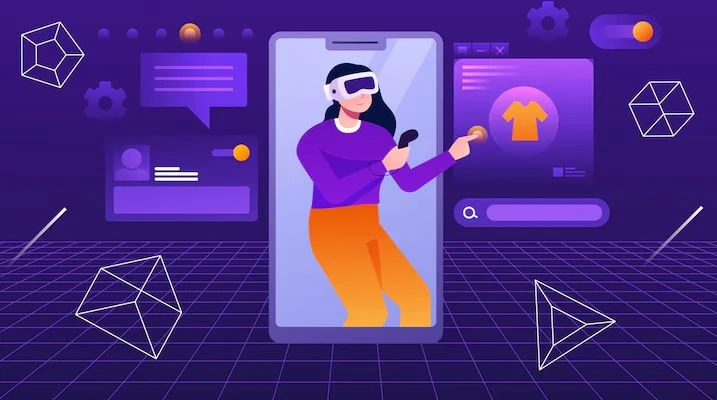
Virtual try-on app development brings plenty of benefits for the businesses. These apps are offering users a new way to interact with online stores. Here are some of the key benefits of AR technology and key features of crowdfunding app development that makes it highly beneficial for the online stores.
Interactive Shopping Experience
A significant advantage presented by virtual try-on applications lies in their personalized approach. These apps empower businesses to tailor the shopping experience to individual customers, thereby enhancing engagement and satisfaction. Through the analysis of user data and preferences, businesses can provide customized product recommendations and styling suggestions, catering to the unique tastes and needs of each shopper.
Reduces Product Returns
The development of virtual try-on applications plays a crucial role in reducing the occurrence of product returns, as it enables customers to virtually preview items before making a purchase decision. This proactive approach to shopping empowers customers to assess products thoroughly, thereby decreasing the likelihood of dissatisfaction upon receipt and subsequent returns. Through this technology, businesses can effectively curtail those expenses that are related to product returns.
Enhances Brand Engagement
Virtual try-on applications foster increased customer engagement, stimulating active participation with the brand. By integrating social sharing functionalities, businesses can harness user-generated content and capitalize on word-of-mouth marketing. Customers who interact with virtual try-on experiences are inclined to share their encounters across various social media platforms, amplifying brand exposure and extending its reach within wider online communities.
Convenience for Everyone
Virtual try-on applications democratize the retail experience, leveling the playing field and ensuring accessibility and convenience for all customers. This elimination of entry barriers empowers businesses to reach previously untapped market segments, thereby broadening their customer base and driving growth opportunities. By embracing virtual try-on technology, businesses can foster greater engagement and interaction with the customers.
Build Live Interactive AR Apps with StruqtIO
StruqtIO has got the resources to develop quality virtual try-on apps using latest tools and technologies. We understand the changing requirements of the ecommerce market, hence our experts exactly know how to bring new immersive features into the picture to make new-age ecommerce apps. We ensure to develop online stores with interactive functionality, so that they can facilitate customers in the best possible way.
Besides AR-powered mobile app development, our teams also posses immense expertise in providing tech solutions related to other categories. We excel in offering cutting-edge tech services in .NET development, cloud integration, database development and more other similar domains. So, if you are looking to build advanced software products based on latest frameworks, get in touch with us today.
Frequently Asked Questions
| What is AR technology? AR technology overlays digital information onto the real world. It seamlessly integrates virtual elements such as images, videos, or 3D models with the user’s physical environment, enhancing their perception and interaction with the surroundings. |
| What are virtual try-on apps? Virtual try-on apps allow users to digitally try on products such as clothing, accessories, or makeup, utilizing AR or VR technology. It simulate how the items will look on them before making a purchase, enhancing their online shopping experience. |
| Which virtual try-on apps are more popular in the market? Currently, there are different types of virtual try-on apps functional in the market. It includes IKEA Place, Sephora Virtual Artist, Warby Parker, Nike Fit and more others. |
Final Words
That takes us to the end of this blog in which we have discussed about virtual try-on development in detail. These apps are quite advanced, and they are built on the bases of AR technology. The good thing about these apps is that they provide users a real-time interaction with the store. This is the reason why AR apps are getting popular in the ecommerce industry, as they are offering people a new way to experience online shopping effectively.

Empower your digital journey with StruqtIO - Your dedicated partner for cutting-edge custom software development, innovation, and digital transformative solutions. Harness the power of technology to elevate your business and redefine your digital landscape today.
